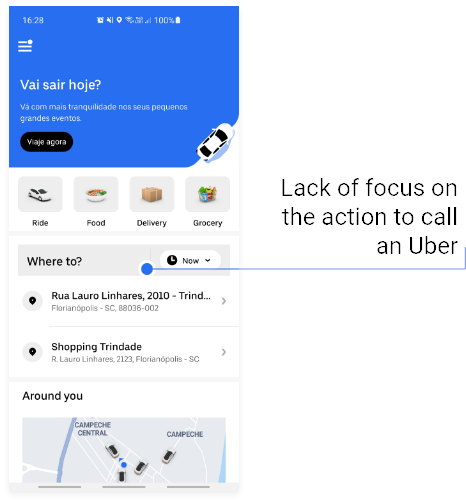WCAG Study
Study Case with Uber App to be WCAG compliant, focusing senior citizens.
-2021-
About
Today, more than ever, usability is essential for making interfaces accessible to everyone. As humans, we each have unique needs, and technology should reflect that. With this in mind, a research study was conducted to evaluate the Uber app's compliance with WCAG standards.
WCAG?
WCAG (Web Content Accessibility Guidelines) is a set of international standards created by the W3C to make digital content more accessible to people with disabilities. It provides guidance on how to design websites and apps that are usable by everyone, including users with visual, auditory, motor, or cognitive impairments.
In this particular research, my primary focus was on senior users.

Analysing the actual UI
In this step, I analyzed the current Uber app, identifying its strengths and weaknesses, and exploring ways to make it more appealing and accessible for senior users.
Wireframe
A wireframe, also known as a "page schematic" or "screen blueprint," is a visual guide that outlines the basic structure of a website or application. It’s used to organize elements in a way that best serves a specific purpose typically driven by a business goal and a creative concept. Wireframes illustrate the layout and arrangement of content, including interface elements and navigation, and show how they work together. The UI was designed to better serve both current users and senior users. Several WCAG guidelines were applied in this project, such as Contrast (1.4.3), Identify Input Purpose (1.3.5), Headings and Labels (2.4.6), among others.





Proposal Changes
Every change was made looking to reach the most user-friendly UI possible, following the WCAG guides. Here I explain the changes and why I would make them.
















